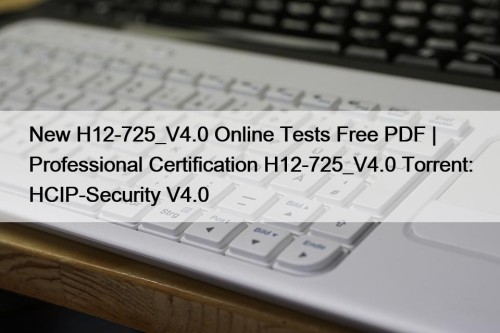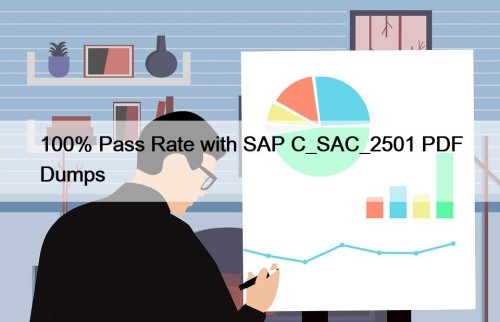Most Popular
 Exam 1Z0-1111-25 Book - Get Tagged as 1Z0-1111-25 Certified In No Time
Exam 1Z0-1111-25 Book - Get Tagged as 1Z0-1111-25 Certified In No Time
The company is preparing for the test candidates to prepare ...
 New H12-725_V4.0 Online Tests Free PDF | Professional Certification H12-725_V4.0 Torrent: HCIP-Security V4.0
New H12-725_V4.0 Online Tests Free PDF | Professional Certification H12-725_V4.0 Torrent: HCIP-Security V4.0
2Pass4sure are supposed to help you pass the exam smoothly. ...
 100% Pass Rate with SAP C_SAC_2501 PDF Dumps
100% Pass Rate with SAP C_SAC_2501 PDF Dumps
Experts hired by C_SAC_2501 exam questions not only conducted in-depth ...



Exam 1Z0-1111-25 Book - Get Tagged as 1Z0-1111-25 Certified In No Time

The company is preparing for the test candidates to prepare the 1Z0-1111-25 Study Materials professional brand, designed to be the most effective and easiest way to help users through their want to get the test 1Z0-1111-25 certification and obtain the relevant certification. In comparison with similar educational products, our training materials are of superior quality and reasonable price, so our company has become the top enterprise in the international market.
1Z0-1111-25 study guide is highly targeted. Good question materials software can really bring a lot of convenience to your learning and improve a lot of efficiency. How to find such good learning material software? People often take a roundabout route many times. If you want to use this 1Z0-1111-25 Practice Exam to improve learning efficiency, our 1Z0-1111-25 exam questions will be your best choice and you will be satisfied to find its good quality and high efficiency.
Test 1Z0-1111-25 Sample Online & Latest 1Z0-1111-25 Exam Camp
There are a lot of materials for Oracle 1Z0-1111-25 practice test. TestInsides is the only site providing with the finest Oracle 1Z0-1111-25 dumps torrent. All TestInsides test questions are the latest and we guarantee you can pass your exam at first time. 1Z0-1111-25 Questions and answers TestInsides provide are rewritten by the modern information technology experts, which is good for you.
Oracle 1Z0-1111-25 Exam Syllabus Topics:
| Topic | Details |
|---|---|
| Topic 1 |
|
| Topic 2 |
|
| Topic 3 |
|
| Topic 4 |
|
| Topic 5 |
|
| Topic 6 |
|
Oracle Cloud Infrastructure 2025 Observability Professional Sample Questions (Q34-Q39):
NEW QUESTION # 34
Which statement is NOT valid about creating an alarm query in Oracle Cloud Infrastructure (OCI) Monitoring?
- A. You must specify a statistic.
- B. You must specify a metric.
- C. You must specify a resource group.
- D. You must specify an interval.
Answer: C
Explanation:
Creating an alarm query in OCI Monitoring involves MQL:
Invalid: You must specify a resource group (D): Resource groups (e.g., groupBy(resourceId)) are optional for aggregating metrics across streams; alarms can function without them.
Why A, B, and C are valid:
A: A statistic (e.g., max, avg) is required to process metric data.
B: An interval (e.g., [1m]) defines the time window, mandatory for evaluation.
C: A metric (e.g., CpuUtilization) is the core of the query.
Resource groups enhance, but aren't required for, alarms.
NEW QUESTION # 35
Which of the following details stored in the External Database service's database connection resource are required to connect to an external database?
- A. DNS hostname, database name, connection type and management agent OCID, user credentials, and role
- B. DNS hostname, port, service name, network protocol, connection type and management agent OCID, user credentials, and role
- C. Port, service name, connection type and management agent OCID, user credentials, and role
- D. Port, database name, connection type and management agent OCID, user credentials, and role
Answer: A
Explanation:
Connecting to an external database via OCI's External Database service requires specific connection details:
DNS hostname, database name, connection type and management agent OCID, user credentials, and role (C):
DNS hostname: The fully qualified domain name of the database host.
Database name: Unique identifier of the database.
Connection type: Protocol (e.g., JDBC, OCI).
Management agent OCID: Identifier of the agent on the host.
User credentials: Username and password.
Role: Privilege level (e.g., SYSDBA).
These are the minimum required fields for secure connectivity.
Why not A, B, or D?
A: Missing DNS hostname, critical for locating the host.
B: Missing DNS hostname; port alone isn't sufficient.
D: Includes extras (e.g., port, network protocol) that are optional or inferred.
This ensures accurate database connectivity.
NEW QUESTION # 36
You are part of a team that manages a set of workload instances running in an on-premises environment. The Architect team is tasked with designing and configuring Oracle Cloud Infrastructure (OCI) Logging service to collect logs from these instances. There is a requirement to archive Info-level logging data of these instances into OCI Object Storage. Which two features of OCI can help you achieve this? (Choose two.)
- A. ObjectCollection Rule
- B. Cloud Agent Plugin Grouping Function
- C. Agent Configuration
- D. Service Connectors
Answer: A,D
Explanation:
To collect logs from on-premises instances and archive Info-level logs in OCI Object Storage, you need tools for log ingestion and data movement:
Service Connectors (A): This feature enables data transfer from OCI Logging (source) to Object Storage (target). You can configure a service connector with a filter (e.g., log level = Info) to archive only Info-level logs.
ObjectCollection Rule (D): Part of Logging Analytics, this rule collects logs from Object Storage buckets into Logging Analytics for analysis. If logs are first written to Object Storage by an agent, this rule ensures continuous ingestion.
Why not B or C?
Agent Configuration (B): Used to set up Management Agents but doesn't handle archiving to Object Storage.
Cloud Agent Plugin Grouping Function (C): This is not a valid OCI feature.
The workflow involves agents sending logs to Logging, Service Connectors filtering and moving them to Object Storage, and ObjectCollection Rules enabling further analysis.
NEW QUESTION # 37
What happens in Stack Monitoring after Management Agents are set up and resources are discovered?
- A. Alarm rules will trigger when resources are down or performance thresholds are crossed
- B. Metric data is immediately collected
- C. Management Agents discover resources that are running locally on the instance
- D. OCI Notifications send email notifications
Answer: B
Explanation:
In OCI Stack Monitoring, once Management Agents are deployed and resources (e.g., databases, applications) are discovered, the immediate next step is the collection of metric data.
Metric data is immediately collected (A): Management Agents are lightweight processes that continuously collect performance and health metrics from discovered resources (e.g., CPU usage, memory utilization) and send them to OCI services like Monitoring or Stack Monitoring. This data becomes available for visualization and analysis right after discovery.
Why not B, C, or D?
Alarm rules (B): Alarms are configured separately in the OCI Monitoring service and only trigger after metric data is collected and thresholds are breached-not an immediate post-discovery action.
Resource discovery (C): Discovery happens before this stage, as the question assumes resources are already discovered. Agents don't rediscover resources post-setup.
Notifications (D): Notifications require separate configuration (e.g., via the Notifications service) and are not an automatic outcome of agent setup and discovery.
This aligns with Stack Monitoring's purpose of providing real-time visibility into resource performance.
NEW QUESTION # 38
In Application Performance Monitoring (APM), where is the span context information located during transfer?
- A. In HTTP call
- B. In the browser and the microservices
- C. In the service boundaries
- D. In HTTP header
Answer: D
Explanation:
In OCI APM, span context (e.g., Trace ID, Span ID) is propagated across services to track requests.
In HTTP header (B): Span context is embedded in HTTP headers (e.g., X-B3-TraceId) during transfer between services. This allows APM to correlate spans across distributed systems for a single user request.
Why not A, C, or D?
Service boundaries (A): This is a conceptual term, not a location for data.
HTTP call (C): Too vague-"HTTP call" isn't a specific storage location.
Browser and microservices (D): Context originates here but is transferred via headers, not stored locally during transit.
This follows the OpenTracing standard used by OCI APM.
NEW QUESTION # 39
......
For a long time, our company is insisting on giving back to our customers on the 1Z0-1111-25 study materials. Also, we have benefited from such good behavior. Our 1Z0-1111-25 exam prep has gained wide popularity among candidates. Every worker in our company sticks to their jobs all the time. No one complain about the complexity of their jobs. Our researchers and experts are working hard to develop the newest version of the 1Z0-1111-25 learning guide.
Test 1Z0-1111-25 Sample Online: https://www.testinsides.top/1Z0-1111-25-dumps-review.html
- Free PDF Oracle - 1Z0-1111-25 - Oracle Cloud Infrastructure 2025 Observability Professional –Valid Exam Book 🤨 Simply search for ➡ 1Z0-1111-25 ️⬅️ for free download on [ www.pass4leader.com ] 🏳1Z0-1111-25 Valid Test Vce Free
- 2025 Realistic Exam 1Z0-1111-25 Book - Test Oracle Cloud Infrastructure 2025 Observability Professional Sample Online Free PDF Quiz 🪂 Search on 「 www.pdfvce.com 」 for 【 1Z0-1111-25 】 to obtain exam materials for free download 🕴New 1Z0-1111-25 Exam Pass4sure
- 2025 Realistic Oracle Exam 1Z0-1111-25 Book Free PDF Quiz 🚵 Open ( www.prep4pass.com ) enter ➽ 1Z0-1111-25 🢪 and obtain a free download 🏐New 1Z0-1111-25 Exam Pattern
- Pass Guaranteed Quiz 2025 1Z0-1111-25: Unparalleled Exam Oracle Cloud Infrastructure 2025 Observability Professional Book 🚁 Search for 《 1Z0-1111-25 》 and obtain a free download on { www.pdfvce.com } 🎫Valid 1Z0-1111-25 Exam Dumps
- Oracle Exam 1Z0-1111-25 Book: Oracle Cloud Infrastructure 2025 Observability Professional - www.getvalidtest.com Ensures you a Easy Studying Experience 🐲 Open website ✔ www.getvalidtest.com ️✔️ and search for ▶ 1Z0-1111-25 ◀ for free download 🤙1Z0-1111-25 Reliable Exam Pattern
- Valid 1Z0-1111-25 Exam Dumps 🥉 New 1Z0-1111-25 Test Labs 💡 New 1Z0-1111-25 Exam Pass4sure 🛵 Copy URL ⇛ www.pdfvce.com ⇚ open and search for ➡ 1Z0-1111-25 ️⬅️ to download for free 🖊Exam 1Z0-1111-25 Pass4sure
- Free PDF Oracle - 1Z0-1111-25 - Oracle Cloud Infrastructure 2025 Observability Professional –Valid Exam Book 🏭 Simply search for ➡ 1Z0-1111-25 ️⬅️ for free download on ➽ www.pass4leader.com 🢪 🌎Latest 1Z0-1111-25 Exam Questions
- Knowledge 1Z0-1111-25 Points 🎱 New 1Z0-1111-25 Test Labs 🛹 Valid 1Z0-1111-25 Exam Dumps 🔕 Search for ➽ 1Z0-1111-25 🢪 and download exam materials for free through ▷ www.pdfvce.com ◁ 👩1Z0-1111-25 Valid Exam Discount
- Oracle Exam 1Z0-1111-25 Book: Oracle Cloud Infrastructure 2025 Observability Professional - www.itcerttest.com Ensures you a Easy Studying Experience ⚔ Search for ➡ 1Z0-1111-25 ️⬅️ and download it for free immediately on ⇛ www.itcerttest.com ⇚ 🧨New 1Z0-1111-25 Exam Pattern
- Free PDF Oracle - 1Z0-1111-25 - Oracle Cloud Infrastructure 2025 Observability Professional –Valid Exam Book 🙇 Download 「 1Z0-1111-25 」 for free by simply searching on [ www.pdfvce.com ] 🟦1Z0-1111-25 Valid Test Vce Free
- Knowledge 1Z0-1111-25 Points 🍌 1Z0-1111-25 Latest Dumps Ebook 🤦 Test 1Z0-1111-25 Duration 🔐 Enter “ www.itcerttest.com ” and search for ⏩ 1Z0-1111-25 ⏪ to download for free 🕠1Z0-1111-25 Latest Test Discount
- 1Z0-1111-25 Exam Questions
- class.regaliaz.com vi.com.mk naatiwiththushara.com japatribe.com vincead319.bloggazzo.com astro.latitudewebking.com yogasangrah.com lms.blogdu.de skillsindia.yourjinnie.com digitalfreedom.in
Tags: Exam 1Z0-1111-25 Book, Test 1Z0-1111-25 Sample Online, Latest 1Z0-1111-25 Exam Camp, 1Z0-1111-25 Pass4sure Pass Guide, 1Z0-1111-25 Latest Test Labs